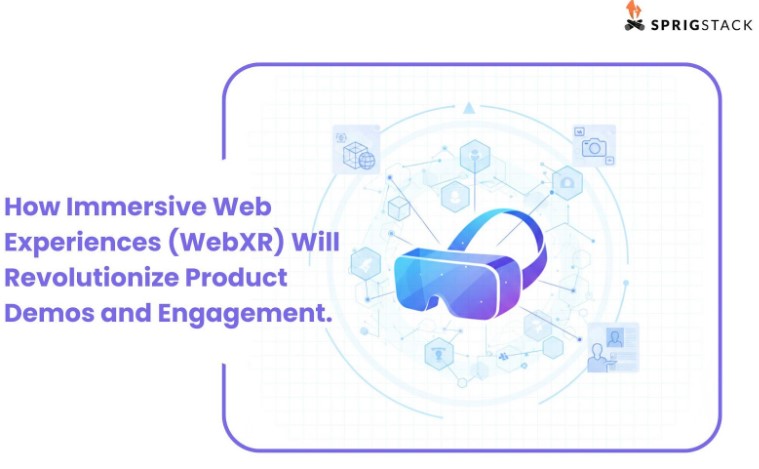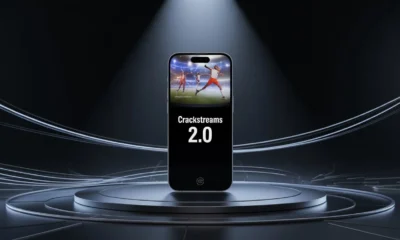Technology
What Are the Top UX Design Principles That Every Web Design Project Should Follow for a Better User Experience?

Your website is more than a digital business card. It’s your brand’s first handshake, your 24/7 salesperson, and often your one shot at making a solid impression.
But even the most eye-catching website won’t win anyone over if it’s a nightmare to use. That’s where smart UX (user experience) design comes in. It’s not just about pretty pixels—it’s about making every interaction smooth, intentional, and human.
If you’re serious about creating something that clicks with real users, teaming up with a skilled and dedicated Web Designer is the move. They know how to blend creativity with usability to craft digital experiences that feel effortless from the very first click.
Why UX Design is Essential in Every Web Design Project
Understanding the importance of UX design is the first step. It doesn’t just make your website look good—it makes it work better for real people. Here’s why it’s so vital:
- Instant First Impressions:Users make judgments about your site in milliseconds. A cluttered, confusing, or slow-loading site creates a negative impression immediately.
- Boosts Conversion Rates:Good UX helps guide users toward specific actions, whether that’s making a purchase, signing up for a newsletter, or filling out a contact form.
- Supports SEO and Rankings:Google rewards websites with good UX by factoring things like loading speed, mobile usability, and navigability into its ranking algorithm.
- Reduces Bounce Rates:If visitors can quickly find what they need, they’re far more likely to stay on your site and explore further.
- Increases Trust and Loyalty:A site that’s easy to use feels more credible, which helps build trust with your audience.
Top UX Design Principles Every Web Design Should Follow
Let’s dive into the core UX principles that every effective website should incorporate. These principles help ensure that users not only visit your site but enjoy the experience enough to come back.
- Design for the User First
At the heart of UX design is a deep understanding of your users. This means stepping into their shoes and designing based on their expectations, challenges, and behavior. The goal is to make the experience as frictionless as possible.
Tips to follow:
- Use real data through user research and feedback
- Build user personas to represent your audience
- Focus on user goals, not internal business processes
When you truly understand your users, you can deliver experiences that feel personal, intuitive, and satisfying.
- Maintain Consistency Across Pages
Consistency doesn’t mean sameness; it means predictability. Users appreciate familiarity. Whether it’s the navigation bar, buttons, or font styles, keeping things uniform makes it easier for users to interact with the site without having to re-learn how it works on every page.
Key areas for consistency:
- Layout and grid systems
- Typography and color schemes
- Interactive elements like buttons and forms
By designing with a consistent structure, users feel more confident and in control, which increases engagement and trust.
- Establish Clear Visual Hierarchy
Visual hierarchy is how you organize and prioritize content so users naturally see the most important information first. When done right, users are guided effortlessly through your content.
How to create it:
- Use large headers for key ideas and actions
- Apply contrasting colors for calls to action (CTAs)
- Utilize whitespace to separate and define elements
It’s not about making everything stand out—it’s about making the right things stand out.
- Ensure Mobile Responsiveness
Mobile devices are now the primary way people access the internet. A mobile-friendly site isn’t a bonus; it’s a necessity. Responsive design ensures your site adapts to any screen size while maintaining usability and aesthetic appeal.
Best practices include:
- Prioritizing mobile-first layouts
- Ensuring buttons and links are easily tappable
- Keeping load times short with optimized media
Mobile responsiveness improves not only UX but also your SEO, since search engines penalize poorly optimized mobile experiences.
- Make Accessibility a Priority
Web accessibility means designing your site so everyone—including people with disabilities—can use it. Not only is it ethically important, but it’s also required under legal standards like the Americans with Disabilities Act (ADA).
Accessible design includes:
- Adding alt text to images
- Using clear, legible fonts
- Avoiding color combinations that are hard to read
- Making sure your site can be navigated by keyboard
Accessible sites reach a wider audience and create a more inclusive user experience.
- Optimize for Speed and Performance
Even the most beautiful website will fail if it takes too long to load. Users expect fast, smooth interactions, and delays can drastically increase bounce rates.
Speed optimization tips:
- Compress images without sacrificing quality
- Minify HTML, CSS, and JavaScript files
- Use a content delivery network (CDN)
- Implement lazy loading for images and videos
Good UX is fast UX. Don’t let slow performance undo all your design efforts.
- Use Clear Calls to Action (CTAs)
Every page should guide users toward an action—whether it’s “Buy Now,” “Contact Us,” or “Learn More.” Your calls to action should be unmistakable and motivating.
Effective CTA strategies:
- Make them visually distinct
- Use action-oriented language
- Place them strategically throughout the page
Don’t clutter the page with too many choices—clarity leads to conversions.
- Provide Feedback Through Interaction
When users interact with your site, they need feedback. Did their form submission go through? Did a button get clicked? These tiny cues create a smooth experience and prevent confusion.
Examples of interactive feedback:
- Subtle animations or color changes when hovering
- Confirmation messages after submitting forms
- Error alerts that explain what went wrong
Micro-interactions may seem small, but they play a huge role in how polished and professional your site feels.
Final Thoughts: Make UX the Core of Your Web Design Strategy
UX is not just one part of the design—it’s the foundation. It affects everything from how users perceive your brand to how likely they are to take action on your site. Following these principles isn’t just about creating better websites; it’s about creating meaningful digital experiences that users appreciate, remember, and return to.
Technology
How immersive web experiences (WebXR) will revolutionize product demos and engagement?

Static images, video content, or scripted walkthroughs have long dominated how businesses portray their newly developed or upgraded products to the end users. While these are still in practice, users often struggle to capture the true essence and depth. Whether it’s determining if the product would at all fit in their environment or going through the specifications, the experiences are quite opinionated and heavily dependent on virtualism. As a result, businesses fail to build a prompt connection with the target audience with their products, despite having a careful launch plan in hand. Now steps in the concept of WebXR— a modern approach holding an immense potential. It isn’t just a futuristic experiment, but rather a practical solution through which businesses can reshape how their products are delineated, explored, and acknowledged. Imagine users stepping into a virtual reality where they can test the product rather than simply reading the specs, instantly through the browser. It will not only change their perspective but also deliver a rich, immersive web experience like never. With this being said, we have articulated a detailed guide to explain how WebXR can shape user experiences and revolutionize product demos.
Turning product exploration into a two-way interaction
Traditional demos mostly limit user interactions to passive viewing. In other words, they can only see the content from predetermined angles, which further makes reality perception challenging. To top it off, a superficial understanding of the product can cause disputes after the purchase, putting the brand value at stake. This is where WebXR steps in, addressing this issue right at the core. Here’s how.
- Users gain full spatial control, by which they can walk around or rotate products naturally.
- Tap-based or gesture-based interactions are enabled so that one can explore hidden parts or internal components.
- Users remain in full control of their pace, making exploration more purposeful and meaningful.
- Businesses can transcend into demos delivering hands-on experience, thereby encouraging higher on-time page and deeper engagement.
Demonstrating complex functionalities without overloading users
Products with too complex technical features or multi-layered structures often leave users overwhelmed, and that too in a negative way. Dense diagrams, long manuals, or large videos can never explain what they want to know, leading to a confused state of mind. It further impacts the purchase decision, often leading to higher cart abandonment.
Owing to this, a credible web development agency capitalizes on WebXR to make interactions worth remembering. Here’s how.
- Complex features are broken down into simple, interactive micro-simulations.
- Information is revealed contextually, only when users interact with a specific feature.
- Real-time animations are displayed to explain mechanisms visually.
- Cognitive load is reduced through scenario-based and intuitive demonstrations.
Making “Try before you buy” truly accurate
Static product visuals can never offer accurate insights into the size, proportion, and fit. It leaves customers with the only option— assuming these attributes and leveraging their guesswork power to make the correct purchase decision. However, these often cause returns, hesitations, and dissatisfaction. Given how these can impact the business, it’s better to switch to the modern, innovative approach of WebXR. It will ensure:
- Full-scale 3D models are placed directly into the users’ real-time environments.
- Lighting and shadows are adjusted automatically to make evaluation more realistic.
- Buyers can validate the fit, compatibility, and usability instantly before the purchase.
Immersive storytelling that makes product benefits more memorable
Visual or verbal descriptions are typically used to explain the benefits in most product demos. However, there’s a prominent absence of real-world relevance. Furthermore, they often fail to assess the depth of the functional value behind the key features.
That’s why a web development agency focusing on ingenious approaches will leverage WebXR. That’s because it:
- Creates environment-based simulations to show the features in action.
- Demonstrates the product benefits through sensory-driven scenarios.
- Empowers users to experience cause-and-effect instantly.
- Transforms abstract features into lived, memorable moments.
Allowing real-time personalization during the demo
Conventional configurations can never build the emotional attachments users mostly seek nowadays. After all, these can offer only flat previews, which won’t delineate how the slightest modification can influence real-world usability, compatibility, or aesthetics. As a result, users’ confidence starts diminishing in custom choices. However, flip the table and WebXR is here to get this issue resolved right from its core. Here’s how.
- It helps users build the product version that fits their needs flawlessly.
- They can switch between materials, colors, and variants through a 3D model.
- WebXR supports environment-specific testing of different configurations.
- It displays all the modifications in real-time from all possible visual angles.
Boosting engagement metrics across every digital touchpoint
Static videos and images can never capture users’ attention instantly. As a result, session durations are often shortened, leading to diminished interaction rates and limited recall. Businesses struggle with maintaining high conversion potential at every stage of the funnel. Here’s how WebRX can address this issue.
- Users are encouraged to explore the products rather than viewing them passively.
- Dwell time is extended through interactive touchpoints.
- Self-guided interactions increase feature discovery rates.
- Recall can be enhanced through rich, multi-sensory experiences.
Fortifying emotional connection through presence
Digital product demos cannot replicate the tactile feel or physical presence. As a result, customers often struggle to build the necessary emotional connection, both with the concerned product and the brand. Owing to this, a popular web development agency will leverage the WebRX approach to:
- Place products directly into the users’ personal space
- Add spatial cues for heightened realism
- Enable natural, human-like movements like walking, inspecting, and learning
- Build emotional resonance through stimulated “ownership” moments
Conclusion
Immersive web experiences have completely changed the narrative of how users perceived, discovered, and accepted product demos in today’s digital realm. Each pain point— from static storytelling to limited visualization and costly physical demos— finds a direct, ingenious, and practical solution in WebRX’s unfathomable potential. Only by enabling realistic stimulations, real-time customization, contextual learning, and deeper emotional presence can a web development agency ensure customers can enjoy the products.
Technology
Boeing 787: Revolutionizing Air Travel with Cutting-Edge Technology

The skies have changed dramatically with the introduction of the Boeing 787 Dreamliner. This aircraft is not just another addition to the fleet; it represents a leap into a new era of air travel. With its sleek design and advanced technology, the 787 has transformed how airlines operate—and how passengers experience flying.
Imagine stepping onto an airplane that prioritizes your comfort while also being environmentally friendly. The Boeing 787 does just that, boasting features that cater to both travelers and airline operators alike. As we delve deeper into this marvel of aviation engineering, you’ll discover what makes the Dreamliner stand out in an ever-evolving industry where innovation reigns supreme. Get ready to explore how the Boeing 787 is reshaping air travel as we know it!
The Innovative Features of the Dreamliner:
The Boeing 787 Dreamliner is a game-changer in the aviation world. Its advanced aerodynamics and lightweight materials set it apart from previous models. Made primarily of carbon-fiber-reinforced polymer, the aircraft reduces weight significantly without compromising strength.
Fuel efficiency is another standout feature. The 787 boasts up to 20% less fuel consumption compared to similar-sized airplanes. This not only lowers operating costs for airlines but also contributes to reduced carbon emissions, making it an environmentally friendly choice.
Passenger comfort has seen remarkable enhancements as well. Larger windows with electronic tinting allow more natural light inside the cabin, creating a more pleasant atmosphere. Improved air quality and lower cabin altitude levels contribute further to a better flying experience, helping travelers feel fresher upon arrival.
Each of these innovations reflects Boeing’s commitment to pushing boundaries and redefining what modern air travel can be.
A. Advanced aerodynamics and lightweight materials
The Boeing 787 Dreamliner stands out due to its advanced aerodynamics. Its sleek design minimizes drag, allowing for smoother flights. This innovation translates into improved fuel efficiency and reduced operational costs.
Another key feature is the use of lightweight materials. The fuselage comprises carbon-fiber-reinforced polymer, which significantly reduces weight compared to traditional aluminum structures. Lighter planes consume less fuel, benefiting both airlines and passengers alike.
These advancements are not just technological feats; they represent a shift in how aircraft are constructed. With improved aerodynamic shapes and robust yet light materials, the 787 sets a new standard for modern aviation design.
As airlines seek to enhance performance while being environmentally conscious, the combination of these elements positions the Boeing 787 as a leader in sustainable air travel solutions. The impact on future aircraft designs will surely be profound.
B. Fuel efficiency and sustainability
The Boeing 787 Dreamliner stands out for its remarkable fuel efficiency. Designed with next-generation engines, it consumes significantly less fuel compared to older aircraft models. This reduction not only cuts operational costs but also minimizes the environmental footprint.
Sustainability is at the core of its design philosophy. The use of advanced composite materials helps reduce weight, further enhancing fuel economy. Each flight emits fewer greenhouse gases, making air travel greener.
Moreover, airlines operating the 787 benefit from lower maintenance needs and extended range capabilities. These features allow carriers to fly longer distances without compromising on performance or comfort.
As global awareness around climate change grows, innovations in aviation technology like those seen in the 787 become increasingly vital. With enhanced sustainability measures in place, this aircraft sets a new standard for eco-friendly air travel.
C. Comfort and passenger experience enhancements
The Boeing 787 Dreamliner prioritizes passenger comfort like never before. Its spacious cabin design creates a sense of openness, allowing travelers to stretch out and relax during long flights.
Large windows enhance the experience by providing breathtaking views while also featuring adjustable dimming capabilities. This means passengers can control the amount of light entering their space, reducing glare and creating a more serene atmosphere.
Moreover, improved cabin pressurization at lower altitudes helps reduce fatigue. The humidity levels are higher than on traditional aircraft, alleviating dryness often associated with air travel.
Additionally, innovative lighting options mimic natural daylight cycles. This promotes better sleep patterns and overall well-being throughout the journey.
With quieter engines contributing to a peaceful environment, flying in the Boeing 787 becomes not just transportation but an enjoyable experience for all onboard.
Impact on Airline Industry and Travel Experience
The Boeing 787 has significantly reshaped the airline industry. Its advanced technology allows airlines to operate more efficiently, reducing operational costs and enabling longer routes without needing refueling stops.
Passengers benefit immensely from these innovations. Many report a smoother ride due to improved aerodynamics, which minimizes turbulence effects.
Cabin pressure adjustments enhance comfort levels for travelers, making long-haul flights less exhausting. The larger windows and better lighting create an inviting atmosphere that passengers appreciate.
Airlines have started marketing their fleets with the Dreamliner as a premium experience option. This shift has encouraged competition among carriers to offer enhanced services and amenities on board.
Sustainability is also at the forefront of many airlines’ strategies now as they seek to attract eco-conscious travelers while meeting regulatory pressures regarding emissions reductions. The Boeing 787 sets a new standard in this arena, prompting others in the industry to follow suit.
Challenges Faced During Development
The development of the Boeing 787 Dreamliner was not without its hurdles. One significant challenge arose from its innovative materials. The extensive use of carbon-fiber-reinforced polymer required new manufacturing techniques, which led to delays.
Supply chain issues also played a critical role in the project’s timeline. The global nature of sourcing parts meant that various components sometimes arrived late or did not meet stringent quality standards. This complicated coordination among teams across different continents.
Additionally, ensuring safety and regulatory compliance was paramount. With so many advanced technologies integrated into one aircraft, engineers faced rigorous testing protocols before receiving approval for commercial flights.
These obstacles tested Boeing’s resilience but ultimately pushed them toward innovation and improvement in their processes.
Future of the Boeing 787 Dreamliner
The future of the Boeing 787 Dreamliner looks promising as it continues to evolve with technological advancements. Airlines are increasingly focused on sustainability, and the Dreamliner is well-positioned to lead in this area.
Boeing aims to enhance fuel efficiency even further. Innovations in engine technology could reduce emissions and operational costs, making air travel more sustainable.
Passenger experience will also see improvements. Enhanced cabin designs may offer a more tranquil flying environment, reducing noise levels while improving air quality.
As airlines adapt to changing market demands, flexibility becomes crucial. The versatility of the 787 allows carriers to optimize routes efficiently without compromising comfort or performance.
With increasing global connectivity needs, the Boeing 787 will likely play a vital role in shaping how we approach long-haul travel into the coming decades.
Other Revolutionary Aircrafts in Development
The aerospace industry is buzzing with innovation. Numerous companies are hard at work on revolutionary aircraft that promise to reshape air travel.
One notable project is the Airbus A220, designed for short-haul routes. Its advanced materials and aerodynamic design enhance efficiency while providing a comfortable experience for passengers.
Electric propulsion systems are also gaining traction. Companies like Zunum Aero aim to develop hybrid-electric planes, significantly reducing carbon emissions and operational costs.
Another exciting venture is supersonic travel. Boom Supersonic’s Overture aims to cut flying time in half without sacrificing passenger comfort or safety. This could revive the golden age of aviation where speed was paramount.
Urban air mobility solutions are emerging rapidly, with startups creating electric vertical takeoff and landing (eVTOL) aircraft for city commuting. These innovations might transform how we view daily transportation in congested metropolitan areas.
Conclusion
The Boeing 787 Dreamliner stands as a testament to innovation in the aviation industry. With its advanced aerodynamics, lightweight materials, and cutting-edge technology, it has set new benchmarks for fuel efficiency and passenger comfort.
As airlines continue to embrace this revolutionary aircraft, travelers can expect an enhanced flying experience characterized by quieter cabins and improved air quality. The impact of the 787 on the airline industry cannot be understated; it has inspired competitors to rethink their designs and operational strategies.
Despite facing challenges during development, such as manufacturing delays and technical issues, Boeing’s commitment to excellence ensured that these hurdles were overcome. The future of the Boeing 787 looks promising with ongoing improvements being made in response to feedback from both airlines and passengers.
As we look ahead, several other groundbreaking aircraft are also in development. These innovations will further reshape air travel as we know it today. With each advancement, aviation continues its journey into a more sustainable and enjoyable future for everyone involved.
Technology
Discover the Next Generation of AI Editing with FaceSwapAI

Artificial Intelligence (AI) has changed the creative world forever — from enhancing photos to generating entire works of digital art. Now, AI has taken another incredible leap forward with face swapping technology. Whether for fun, entertainment, or professional use, FaceSwapAI is redefining how we create and edit visual content. With advanced deep learning algorithms and an intuitive design, it’s the best face swap ai platform available today — simple, smart, and amazingly powerful.
What Is FaceSwapAI?
FaceSwapAI is an innovative online platform that allows users to swap faces in photos and videos instantly. Using advanced AI and machine learning, it recognizes facial features, lighting, and expressions to create smooth, realistic results. What once required hours of manual editing in complex software can now be done automatically in seconds — all through your web browser.
Whether you want to put your face on a famous movie character, swap faces with a friend, or create viral social media content, FaceSwapAI makes it effortless. The platform is designed for everyone — from casual users who want to have fun to professionals who need powerful creative tools.
Why FaceSwapAI Is the Best Face Swap AI
In a growing sea of AI tools, FaceSwapAI stands out for its precision, speed, and ease of use. Here’s why it’s considered the best face swap ai available today:
- Unmatched Realism: FaceSwapAI produces seamless, lifelike results that perfectly match lighting, angles, and skin tones.
- Fast and Easy: Create a perfect face swap in seconds with no editing experience needed.
- Completely Online: No downloads or installations — use it directly from your browser on any device.
- Free and Accessible: Enjoy free AI face swapping with professional-level results.
- Safe and Ethical: FaceSwapAI ensures data privacy and encourages positive, responsible use of its technology.
With this combination of performance, accessibility, and trust, it’s no wonder FaceSwapAI has become a favorite among creators, influencers, and everyday users.
Next-Level Creativity in Seconds
FaceSwapAI empowers you to explore your imagination like never before. You can:
- Create hilarious memes and viral social media videos.
- Experiment with movie and celebrity face swaps.
- Make creative projects for school, marketing, or art.
- Add realistic visual effects to videos or presentations.
All of this can be done instantly with just a few clicks. The technology automatically detects and blends faces seamlessly, so you don’t have to spend hours fine-tuning edits. This efficiency makes FaceSwapAI perfect for both personal and professional use.
From Fun to Professional Use
While FaceSwapAI is incredibly popular for fun edits, it’s also making waves in professional industries. Filmmakers, advertisers, and content creators are using it to streamline workflows, test ideas, and create engaging visuals.
- Filmmakers can replace or adjust faces in post-production without reshooting scenes.
- Marketers can create attention-grabbing campaigns that stand out online.
- Digital artists can experiment with new looks and creative styles.
- Educators can bring history or storytelling to life with interactive visuals.
This balance between entertainment and utility is what makes FaceSwapAI such a revolutionary tool in modern digital editing.
Safe, Secure, and Responsible AI
AI face swapping comes with incredible potential, but it also requires careful handling. FaceSwapAI takes a responsible approach by prioritizing user privacy and promoting ethical use. The platform encourages creativity while ensuring users respect privacy and avoid misuse.
All uploads are handled securely, and no sensitive data is stored or shared. This makes FaceSwapAI not only powerful but also one of the safest tools in the AI editing space.
The Future of AI Editing
FaceSwapAI represents the future of AI-driven creativity. As AI continues to evolve, we can expect even more realistic, dynamic, and interactive possibilities. From real-time video face swaps to 3D rendering and augmented reality, the next generation of editing tools will make creative expression faster and more immersive than ever.
FaceSwapAI is leading this charge, blending cutting-edge innovation with accessibility to ensure that everyone — from beginners to professionals — can harness the power of AI creativity.
Conclusion
FaceSwapAI isn’t just another editing tool — it’s the beginning of a new era in digital creativity. With its unmatched realism, user-friendly design, and commitment to safety, it has earned its place as the best face swap ai platform on the web. Whether you’re looking to make people laugh, tell a story, or produce professional-grade visuals, FaceSwapAI gives you everything you need to bring your imagination to life.
-

 Entertainment6 months ago
Entertainment6 months agoSflix: How It’s Changing the Way We Watch Movies and TV Shows
-

 Blog4 months ago
Blog4 months agohanime1: The Ultimate Destination for Anime Lovers
-

 Technology7 months ago
Technology7 months agoSimpcitt: The Rise of a Unique Online Community
-

 Entertainment5 months ago
Entertainment5 months agoCrackstreams 2.0: The Future of Free Sports Streaming?
-

 Bills7 months ago
Bills7 months agoWhy Does My Instagram Reel Stop Getting Views After One Hour? How to Fix It?
-

 80s7 months ago
80s7 months agoFavorite 100 Songs of the 80s: (#1) Michael Jackson – Billie Jean
-

 Technology7 months ago
Technology7 months agoAnon Vault: Protecting Your Digital Footprint
-

 Blog7 months ago
Blog7 months agoSimpcitu: The New Age Trend Shaping Online Interactions
